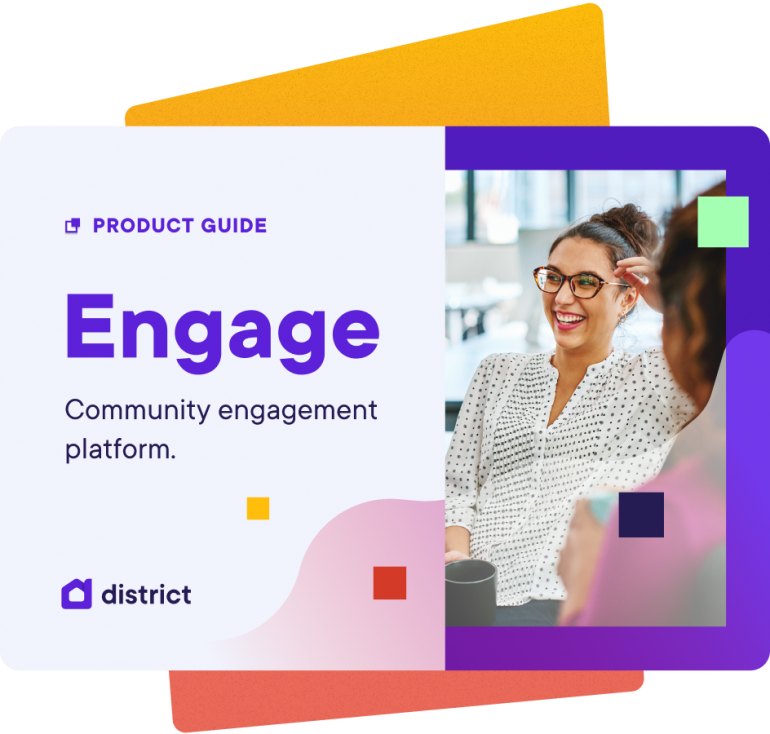The Importance of Storytelling in Community Engagement: How to Use Narratives to Build Community
The practice of community engagement is about drawing out genuine, insightful observations from the general public to inform public decision-making. While tools such as surveys and polls are useful for directing community responses in specific ways, storytelling is a bit riskier, but ultimately more insightful. Storytelling allows respondents to outline their personal experiences in detail. It’s risky because it might reveal things we may not want to hear, but it also has the power to change our minds, and in public projects and policy, that is a powerful thing.
When it comes to finding out about how an individual feels about a particular issue, a survey or a poll can give us an insight into what they feel. But what is more interesting is why they feel that way. Storytelling can help tease those ideas out. Understanding an individual's motivations behind their position also makes it easier to work with them to help develop a solution that satisfies the needs of everyone involved.
Asking for the community to share their stories is smart policy. Not only will you deepen your understanding of the issues facing those in your community, but by giving people a platform to really share their experiences in a safe and respectful way, you are helping to build a culture of trust, empathy and understanding.
In the context of community engagement, storytelling is about using narratives to create meaningful connections between people. By sharing our stories of struggle, fear, joy or pain we can help others understand who we are, where we come from and what we value, while also having the opportunities to learn from others about their experiences.
So how can community engagement practitioners harness the power of storytelling?
Create space for storytelling
Consider the impact that personal memories can have on the idea of a place and its connection to a community. Such insights would be invaluable for town planners tasked with reimagining an urban site.
When planning a community engagement project, create a space where people can share their stories, such as a community event or a social media post that invites feedback. Something as simple as posting a vintage photo on Facebook can be a powerful trigger to encourage people to share their memories of a particular place.
These stories can offer powerful insights into not just what a community values, but why.
Use storytelling to frame community issues
Storytelling can bring an issue or an idea to life, better than statistics ever could. The power of authentic personal experience can shift community sentiment, and inspire people to engage with an issue that might otherwise struggle to capture their attention.
For community engagement practitioners, consider the impact of a testimony about an accident at a busy intersection to encourage people to engage with a transport infrastructure upgrade project; or a story about a local skateboarder qualifying for the Olympic Games to build interest in a community skate park.
Framing issues in the terms of personal stories helps people to understand the impact of those issues on individuals and families.
Bring storytelling into your communications strategy
Storytelling isn’t just about individual stories. It’s also a way to frame your communications strategy. From your website, to your social media
Storytelling isn’t just about individual stories. It’s also a way to frame your communications strategy. From your website, to your social media posts, flyers, advertisements, newsletters, and email, each channel offers an opportunity to share the story about your project. Remember, it’s not just about what, but why.
If you are using a community engagement platform like District Engage, your project website can communicate the fundamentals of the project, such as the scope of works, the timeline, maps, architectural drawings, and supporting documents.
Adding interactive and immersive content will bring your story to life, so add photographs, infographics, and videos alongside participation tools such as surveys and polls. Finally, invite online and in-person public contributions via discussion boards, forums, and community events.
At the same time, use your communication channels to bring awareness to the project, and why it’s important. Consider using community storytelling here: sharing personal experiences and insights of others will add authenticity and meaning to your message.
Finish the story!
When you’ve taken your audience on a journey, you can’t leave them wondering what happens at the end. The same goes for storytelling and community engagement. Storytelling is a great way to build authentic engagement and cultivate a culture of trust, so it’s important to respect your community and their contributions, and keep them informed about the progress of your project.
Your District Engage website lets you post notifications to interested parties and you can also add project updates to your website to inform the community how to engage with the project as it continues to roll out.
It’s also very important to share the results of the community engagement project with the participants and the community as a whole. How have their insights and feedback contributed to the overall scope and design of the project? Have they been listened to? If not, why? Closing this feedback loop is essential to developing a culture of trust and encouraging residents to be active, interested, and engaged members of the community.




